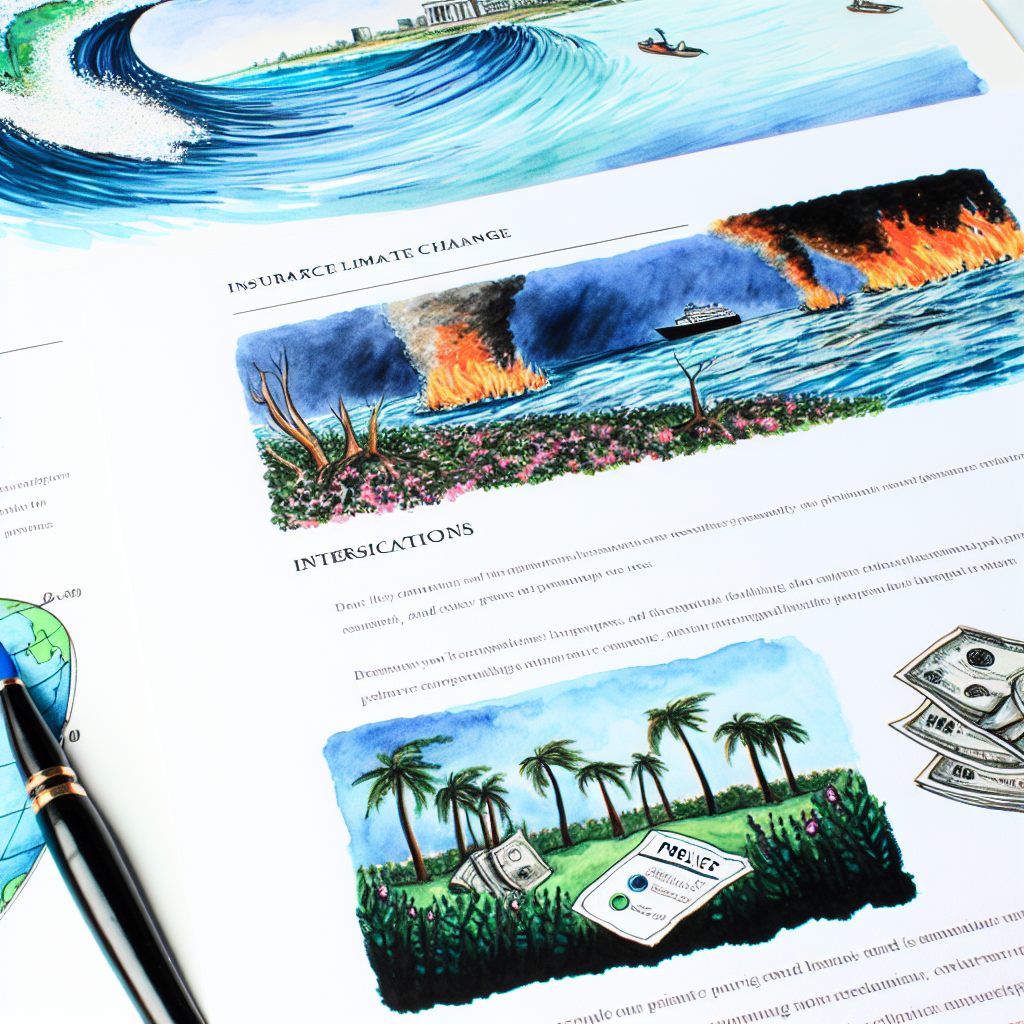Climate Change and Insurance: Assessing the Impact on Policies and Coverage

Climate change is one of the most pressing issues of our time, with far-reaching consequences for various sectors of the economy. One industry that is particularly vulnerable to the effects of climate change is the insurance industry. As extreme weather events become more frequent and severe, insurers are facing significant challenges in assessing risks, setting premiums, and providing coverage. In this article, we will explore the impact of climate change on insurance policies and coverage, examining the key challenges faced by insurers and the strategies they are adopting to mitigate risks.
The Rising Costs of Climate-Related Disasters
Climate change has led to an increase in the frequency and severity of natural disasters such as hurricanes, floods, and wildfires. According to the Intergovernmental Panel on Climate Change (IPCC), the number of weather-related disasters has more than tripled over the past 30 years. These disasters not only cause immense human suffering but also result in significant economic losses.
Insurers are on the front lines of these losses, as they are responsible for compensating policyholders for damages caused by climate-related disasters. The costs associated with these disasters have been rising steadily in recent years. According to a report by Swiss Re, insured losses from natural catastrophes reached a record high of $144 billion in 2017, up from $56 billion in 2016.
These rising costs are putting pressure on insurers to reassess their risk models and pricing strategies. Insurers need to accurately assess the risks associated with climate change and incorporate them into their underwriting processes to ensure the long-term sustainability of their business.
Challenges in Assessing Climate-Related Risks
Assessing climate-related risks is a complex task for insurers. Climate change introduces new uncertainties and challenges that traditional risk models may not adequately capture. Here are some of the key challenges insurers face:
- Uncertain Future Scenarios: Climate change is a long-term phenomenon, and its impacts are difficult to predict with certainty. Insurers need to consider a wide range of possible future scenarios and assess their potential impact on policyholders.
- Data Limitations: Insurers rely on historical data to assess risks and set premiums. However, climate change is altering the frequency and severity of extreme weather events, making historical data less reliable for predicting future risks.
- Geographical Variations: Climate change affects different regions in different ways. Insurers need to account for geographical variations in climate risks and adjust their coverage accordingly.
- Interconnected Risks: Climate change can lead to a cascade of interconnected risks. For example, rising sea levels can increase the risk of flooding, which in turn can lead to property damage, business interruption, and liability claims. Insurers need to understand and quantify these interconnected risks.
Addressing these challenges requires insurers to invest in research and development, collaborate with climate scientists, and develop sophisticated risk models that can capture the complexities of climate-related risks.
Adapting Insurance Policies to Climate Change
To cope with the challenges posed by climate change, insurers are adopting various strategies to adapt their policies and coverage. Here are some of the key strategies:
- Introducing Climate-Specific Policies: Insurers are developing specialized policies that provide coverage for climate-related risks. For example, some insurers offer parametric insurance policies that pay out based on predefined triggers such as wind speed or rainfall levels.
- Encouraging Risk Mitigation: Insurers are incentivizing policyholders to take measures to mitigate climate-related risks. For example, insurers may offer lower premiums to homeowners who install flood-resistant measures or businesses that implement disaster preparedness plans.
- Investing in Resilience: Insurers are investing in projects and initiatives that enhance the resilience of communities and infrastructure to climate-related risks. For example, insurers may fund the construction of flood barriers or support research on climate adaptation strategies.
- Collaborating with Governments: Insurers are working closely with governments to develop policies and regulations that promote climate resilience. For example, insurers may collaborate with policymakers to develop risk-based zoning regulations or support the creation of climate risk pools.
These strategies not only help insurers manage their exposure to climate-related risks but also contribute to building more resilient communities and reducing the overall costs of climate change.
Case Study: Flood Insurance in the United States
Flood insurance is one area where the impact of climate change on insurance policies and coverage is particularly evident. Flooding is the most common and costly natural disaster in the United States, and climate change is expected to increase the frequency and severity of floods in many regions.
The National Flood Insurance Program (NFIP) in the United States provides flood insurance coverage to homeowners and businesses. However, the program has faced significant challenges in recent years due to the increasing costs of flood damage.
According to a report by the Government Accountability Office (GAO), the NFIP is already facing a large and growing debt due to the high costs of flood claims. The report also highlights the limitations of the NFIP in accurately assessing flood risks and setting appropriate premiums.
To address these challenges, the NFIP is undergoing reforms to improve its risk assessment and pricing methodologies. The program is also exploring partnerships with private insurers to increase the availability of flood insurance coverage.
Conclusion
Climate change poses significant challenges for the insurance industry, requiring insurers to reassess their risk models, pricing strategies, and coverage options. The rising costs of climate-related disasters, coupled with the uncertainties and complexities of climate risks, necessitate a proactive approach from insurers.
By developing specialized policies, encouraging risk mitigation, investing in resilience, and collaborating with governments, insurers can adapt to the changing climate and contribute to building more resilient communities. However, addressing the challenges of climate change requires a collective effort from insurers, policymakers, and society as a whole.
As the impacts of climate change continue to unfold, it is crucial for insurers to stay ahead of the curve and continuously innovate to meet the evolving needs of policyholders. Only by effectively assessing and managing climate-related risks can insurers ensure the long-term sustainability of their business and provide the necessary coverage to those affected by the consequences of climate change.








